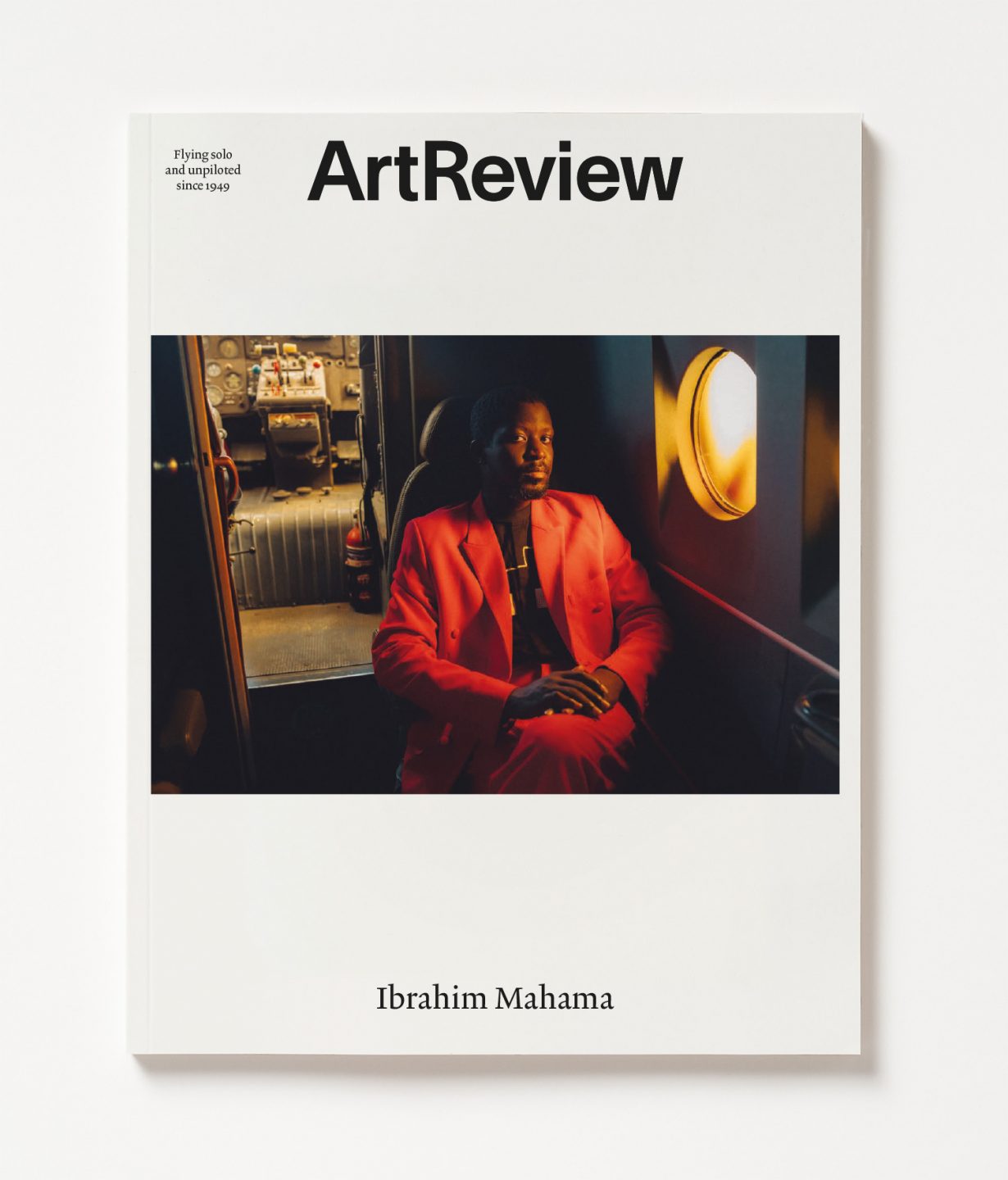Featuring Ibrahim Mahama and Tabita Rezaire; essays on magic and queer theory; reviews from Venice, São Paulo and AlUla; and much more

ArtReview’s May cover features the Ghanaian artist Ibrahim Mahama. He’s one of an increasing number of artists worldwide who view their role not just as a maker of objects, but also as a builder of communities and networks: in his case (among other activities), the founding of the Savannah Centre for Contemporary Art in his hometown of Tamale. ‘Art spaces in Africa tend to memory-hole the colonial era as they oscillate between obsessing about contemporary art and artists, and about traditional artefacts,’ writes Azu Nwagbogu. ‘Mahama and the institutions he has founded in Ghana offer a way out of this impasse by focusing on the art space as a site for experimentation, regeneration, restitution and repatriation.’
The artworld’s interest in magic and spirituality has been gathering momentum over the last few years (converging in the themes of this year’s Venice Biennale – reviewed by Mark Rappolt in this issue). In a wideranging essay, J.J. Charlesworth traces the artworld’s dalliance with the arcane. ‘The fact that artists from William Blake to Austin Osman Spare to Chiara Fumai can be seen, retrospectively, as part of one long history suggests that mystical sensibilities are as old as modern art itself,’ he writes, ‘only suppressed by a mainstream culture that saw belief in spirits, fairies and non-Western gods as antithetical to the rationalistic, secular and scientific values out of which modernity developed.’
Also in this issue
Speaking of magic, Tabita Rezaire, the Franco-Guyanese-Danish artist, finds in the intersection between technology, art and spiritualism a potential site for healing and a corrective to the long-lasting traumas of colonialism. For this issue, Rezaire collaborates with artist Naomi Moonlion to present the project A Spiritual Journey: From Anger to Ancestral Healing. ‘There is much to be angry about in the world, and lots of anger to fuel the creation of art,’ writes Moonlion. ‘Anger can be resistance, it can be power. But anger too can be exhausting.’
Meanwhile, Rosanna McLaughlin examines how in recent years, queer theory has become a keystone in the contemporary artworld. Does this mark a moment of triumph or is it merely a sign of our present psychic malaise – a need to make our otherwise dull, conformist selves seem ‘interesting’? ‘To queer something is to provide a phenomenological reboot of a subject, an exercise that involves performing a kind of ideological capture,’ she writes. ‘Everything, from the museum, the Middle Ages, herbalism, the countryside, the economy, colonialism, yoga, the law and even entire nation states have been given the treatment.’
Plus
A roundtable with The Asia Forum for the Contemporary Art of Global Asias. Oliver Basciano considers the evolution of a police-car-turned artwork at Rio de Janeiro’s SP-Arte fair. Rahel Aima visits the inaugural Desert X AlUla. Emmanuel Iduma writes on the photographs of Bruno Barbey. And Martin Herbert questions whether artworld friendships are ever actually real. Plus the usual mix of book and exhibition reviews from around the world, including Yoko Ono, Jac Leirner, and the Whitney Biennale.